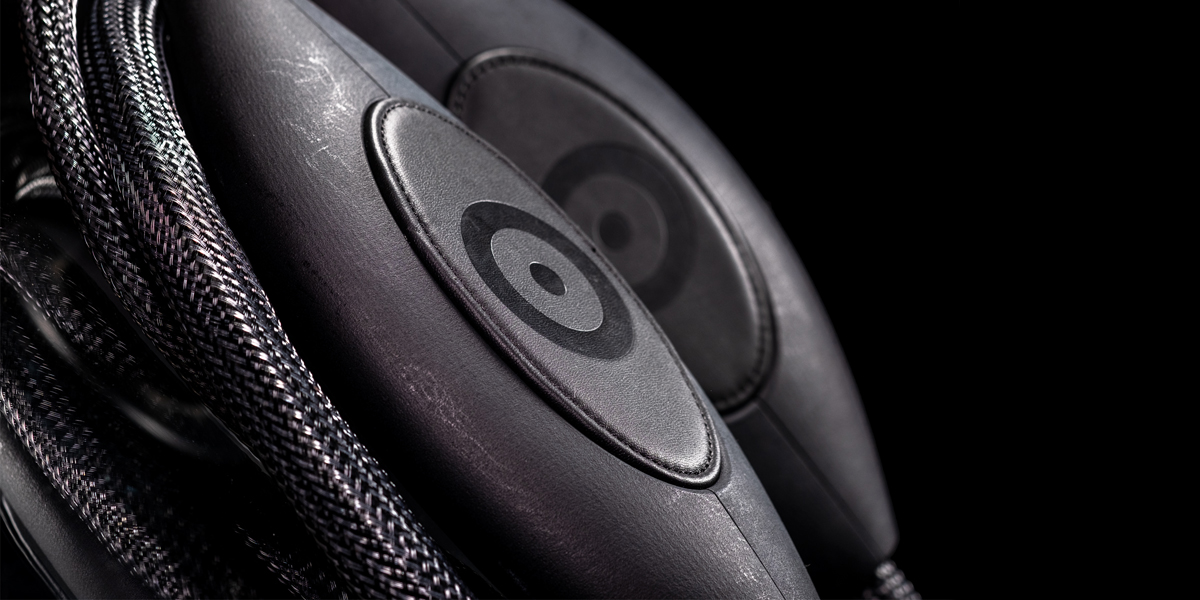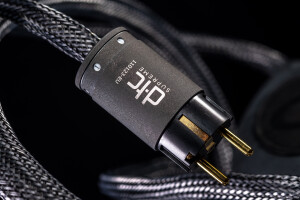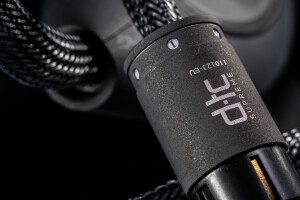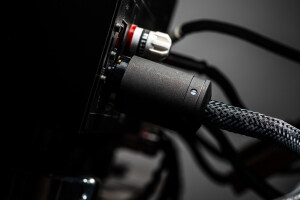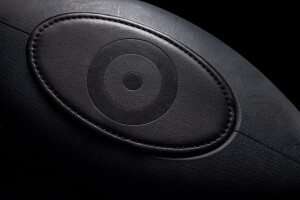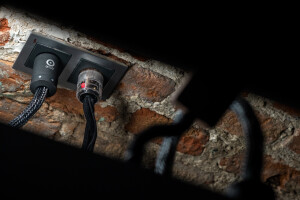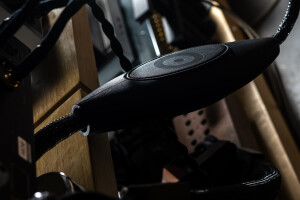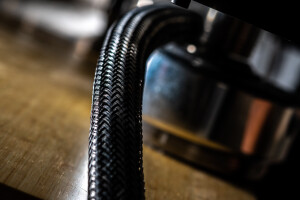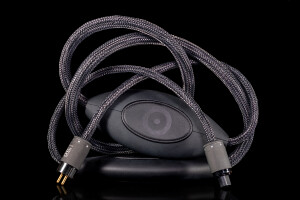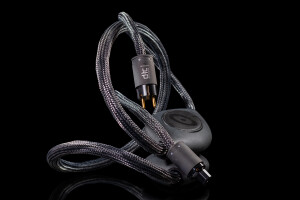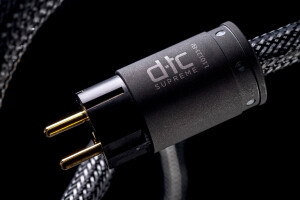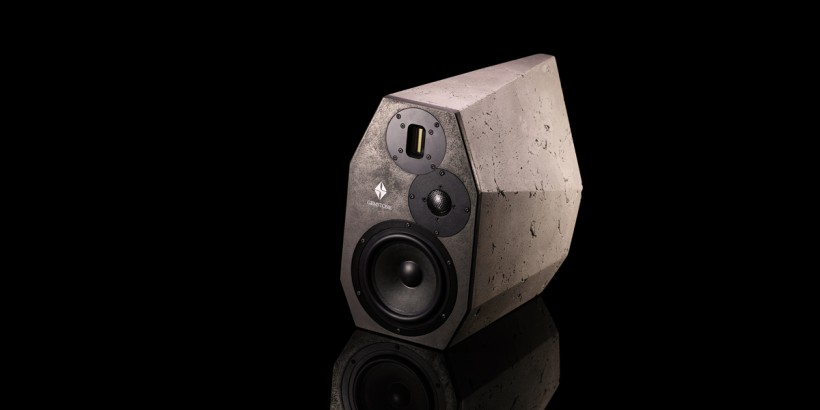Ansuz A2 power loom reviewed at this site nearly two years ago nicely set the stage for Ansuz D-TC Supreme power cord that was sent my way several weeks ago. It sells for more than any other audio component I own and now it’s time to find out whether it lives up to that dear tag. Enjoy!
8,848.86m
Let me start on a private note. As an audio reviewer for a living I operate within several self-imposed necessary frames. I stay away from product types beyond my expertise and comfort zone, which explains why I haven’t yet published any material related to i.e. vinyl or CDs. We all start somewhere and work our way up from there, but say a costly CD player story penned by a freshman to the breed wouldn’t be of any value for readers after such hardware. Moving on, I run a one-man company so I do everything by myself; unpacking, photos, listening, writing and return logistics. That’s why components too massive to handle on my own and/or not fit for my listening room’s size or setup are in most cases off the menu. That said, a successful full-time reviewer gig essentially means being practical without the stupid. “Know thy place”, “Know thy tools of the trade”, “Thou shall not agree to loaners you’ll regret later” and “Thou shall not conduct silly experiments of no use to anyone” are the commandments I try to live by. Here also applies the “Thou shall not be cheeky” rule that prevents me from reaching the insanely expensive tier, but I routinely break this one and today’s that day again.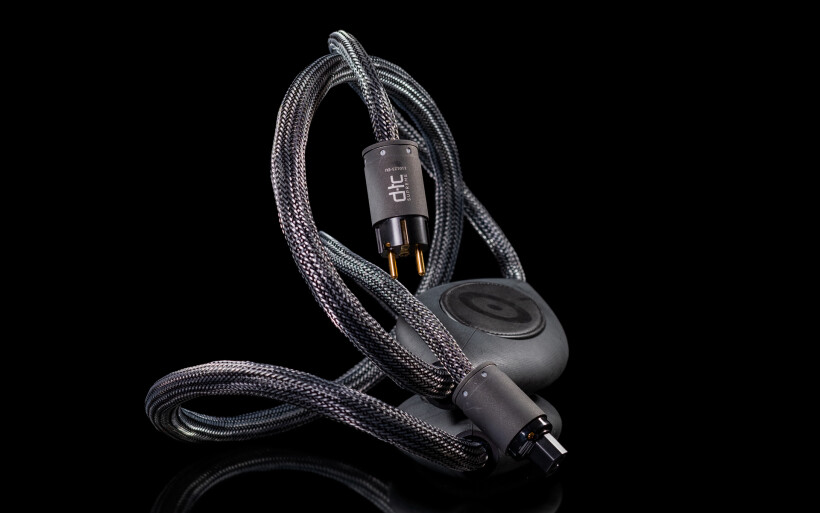 Most audio manufacturers focus their marketing efforts on promoting specific products and far fewer are those open to reviewers’ suggestions, but establishments well-stocked with samples of each type and happy to meet even craziest loaner requests head on are extremely rare. This report’s Audio Group Denmark previously known as UpperLevel APS fits that unique profile to perfection. Its brands Børresen (speakers), Ansuz (cables and accessories) and Aavik (electronics) appeared at Srajan’s and this site multiple times already so don’t need any extra introduction. These luxurious rosters very quickly escalate into a wallet-intense stratosphere, which isn’t any shocking considering that Audio Group Denmark’s founders Lars Kristensen and Michael Børresen are the industry’s veterans previously associated with Nordost and Raidho. During my stay at their facilities in Aalborg and Aarhus it was also quite clear that they’ve mastered the fine art of scaling up performance. The most significant sonic spikes always occurred past transitioning from these Danes’ second best to top tier regardless of a component type and had me thoroughly impressed each time.
Most audio manufacturers focus their marketing efforts on promoting specific products and far fewer are those open to reviewers’ suggestions, but establishments well-stocked with samples of each type and happy to meet even craziest loaner requests head on are extremely rare. This report’s Audio Group Denmark previously known as UpperLevel APS fits that unique profile to perfection. Its brands Børresen (speakers), Ansuz (cables and accessories) and Aavik (electronics) appeared at Srajan’s and this site multiple times already so don’t need any extra introduction. These luxurious rosters very quickly escalate into a wallet-intense stratosphere, which isn’t any shocking considering that Audio Group Denmark’s founders Lars Kristensen and Michael Børresen are the industry’s veterans previously associated with Nordost and Raidho. During my stay at their facilities in Aalborg and Aarhus it was also quite clear that they’ve mastered the fine art of scaling up performance. The most significant sonic spikes always occurred past transitioning from these Danes’ second best to top tier regardless of a component type and had me thoroughly impressed each time.
Let’s now detour towards my Danish contact Morten who since day one of our acquaintance has been fully open to any review ideas and also very clear about Audio Group Denmark’s entire lineup at my disposal. Although several its products already reviewed at this site weren’t affordable by any means, that ceiling is far higher still. It includes €160’000 speakers, a power distributor with €36’000 on its sticker, tiny decoupler pucks priced at €3’500 each and so on so forth. As much as I enjoy having my feet on the ground, when the sky is the limit I think about how flying feels like. Besides, this year’s been quite the rollercoaster so finishing it with a proper view from way up high seems fitting. Long story short, I’ve asked Morten to send over the very best power cord available and just one to keep hardware triangulations nice and easy. Several days later a massive box with Ansuz D-TC Supreme was sent my way.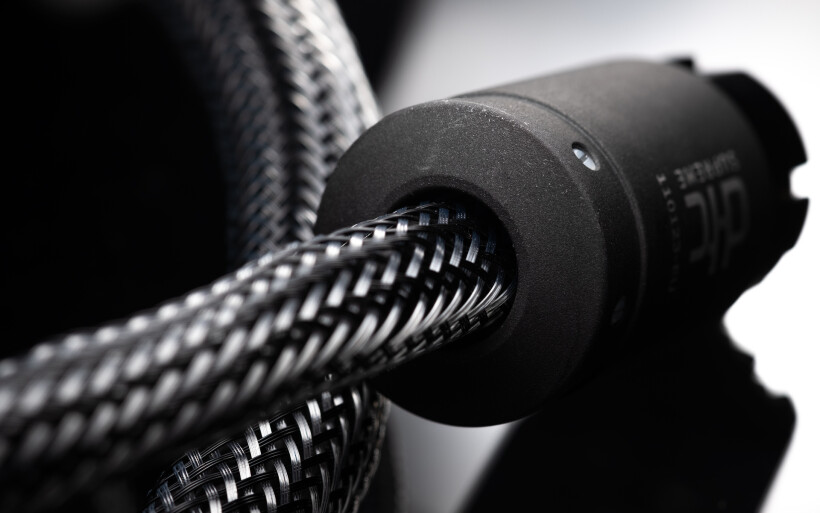 My curiosity about Danes’ very best was the primary but not the only reason why I’ve asked specifically for their DT-C Supreme. My plan to go big and Morten’s willingness to support it still wouldn’t win over my fairly small listening room that says nay to Børresen’s largest most dear 05 floorstander model. Its smaller siblings were already covered by Srajan and me and the same story was with many Aavik’s products. However, our separate takes on Ansuz’s mid-tiered D2 and entry-level A2 ranges left an opening on the very top named D-TC Supreme. Power cables are widely considered the most beneficial, audible and important of them all, so my decision which exact Supreme type to pursue was instant. Morten casually asked whether he should dispatch the full loom; probably some four or five such cords and matched distributor box. That massive €200’000+ stack with all its hefty ingredients would demand space behind my rack I simply didn’t have. Luckily just one 3.0m Ansuz D-TC Supreme power cord sufficed to learn how its makers’ top cable tech works in practice and was manageable just about enough to not stress too much.
My curiosity about Danes’ very best was the primary but not the only reason why I’ve asked specifically for their DT-C Supreme. My plan to go big and Morten’s willingness to support it still wouldn’t win over my fairly small listening room that says nay to Børresen’s largest most dear 05 floorstander model. Its smaller siblings were already covered by Srajan and me and the same story was with many Aavik’s products. However, our separate takes on Ansuz’s mid-tiered D2 and entry-level A2 ranges left an opening on the very top named D-TC Supreme. Power cables are widely considered the most beneficial, audible and important of them all, so my decision which exact Supreme type to pursue was instant. Morten casually asked whether he should dispatch the full loom; probably some four or five such cords and matched distributor box. That massive €200’000+ stack with all its hefty ingredients would demand space behind my rack I simply didn’t have. Luckily just one 3.0m Ansuz D-TC Supreme power cord sufficed to learn how its makers’ top cable tech works in practice and was manageable just about enough to not stress too much.
Prior to moving further let’s first address the unapologetically dear elephant in the room. Ansuz D-TC Supreme as reviewed sells for €36’000 and each its additional meter ads €9’000 extra to the bill. On that score this cord beats my DAC, mono amps, preamp, speakers, entire home setup and Skoda Superb I got brand new from a dealer in mid 2019. My reference platform’s all cables and power box demand less. I’m sure that many individuals now will scratch their heads in disbelief and wonder why on earth D-TC Supreme even exists, to then quickly estimate that its two bulges in-between three thick braided cuts finished with plugs on both ends can’t cost this much. Meanwhile, for unmoved Danes it’s business as usual. The way I see it, Ansuz’s top shelf exists because there’s demand for it the same way there’s one for exotic cars, mansions, watches and many other luxuries only lucky few can afford. Audio Group Denmark’s founders known for their relentless pursuit of top performance spare no coin on R&D to reach it. The higher their product tier, the more substantial financial investments they make and naturally want back with profits. That said, Ansuz D-TC Supreme’s price tag reflects primarily time and cash that went into this ambitious project and is a far cry from the sum total of its components. That’s why any calculations based on these parts alone are as silly and unrealistic as is forgetfulness about distribution margins and operational costs of an European audio house that hires 50+ employees. On a side note, Audio Group Denmark’s homeland is the 5th most expensive on the planet right now. To clarify, this is not my attempt to justify D-TC Supreme’s long sticker but rather a reminder that there’s far more to it than just some wire, insulator and connectors. Now with that sensitive matter out of the way let’s carry on.
The way I see it, Ansuz’s top shelf exists because there’s demand for it the same way there’s one for exotic cars, mansions, watches and many other luxuries only lucky few can afford. Audio Group Denmark’s founders known for their relentless pursuit of top performance spare no coin on R&D to reach it. The higher their product tier, the more substantial financial investments they make and naturally want back with profits. That said, Ansuz D-TC Supreme’s price tag reflects primarily time and cash that went into this ambitious project and is a far cry from the sum total of its components. That’s why any calculations based on these parts alone are as silly and unrealistic as is forgetfulness about distribution margins and operational costs of an European audio house that hires 50+ employees. On a side note, Audio Group Denmark’s homeland is the 5th most expensive on the planet right now. To clarify, this is not my attempt to justify D-TC Supreme’s long sticker but rather a reminder that there’s far more to it than just some wire, insulator and connectors. Now with that sensitive matter out of the way let’s carry on.
Ansuz D-TC Supreme is handmade at Audio Group Denmark’s main facility in Aalborg and generously loaded with its in-house developed tech heavily focused on mechanical grounding, resonance control and noise cancellation. The on-site description of this effort is shy on details, but its key designer – Michael Børresen – was happy to shed some light on it. He first explained that the average speed aka drift velocity of electrons inside a conductor is about 1mm per second, while a cable’s mechanical properties impact how electromagnetic fields around it move these subatomic parts. Its capacitance and inductance kept very low provide instant current transfer and mechanical stability prevents outside forces from interfering. If all this sounds simple, measures inside DT-C Supreme that unlocked these goals are elaborate.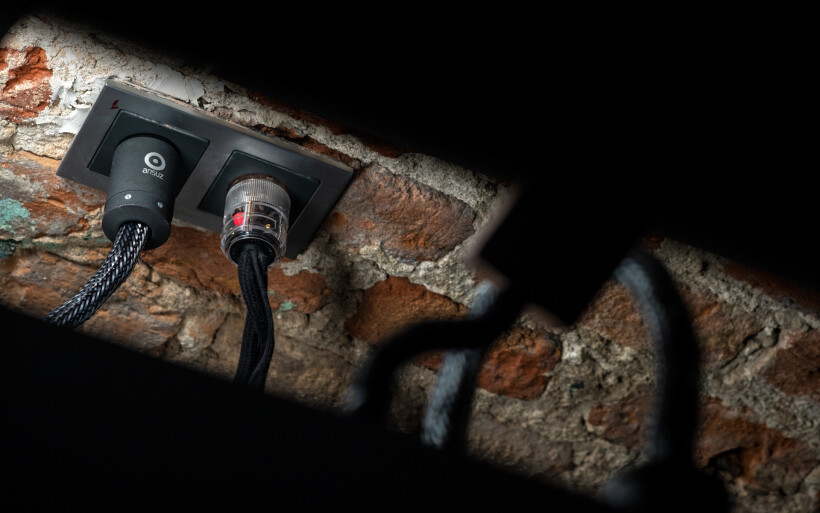 I was told that D-TC Supreme’s tone depends on mechanical firmness and internal geometry more than its conductor material, here in form of several thick individually shielded solid-core copper wires under Teflon jackets. Each pair of these closely wound helical conductive strands has one leg purposely inversed to significantly reduce their inductance. Interestingly, silver plating on these veins would lower it by some 6-8% and raise their cost tenfold. Then the conductive core is surrounded by multiple loops of differently spliced and layered thinner wires designed to prevent the aerial effect and slice large environmental standing waves into many tinier less harmful ripples. In short, Ansuz’s top shelf power cable doesn’t don’t know how long it is, which makes it a terrible antenna that’s resilient to any noise incoming from its surroundings or mains.
I was told that D-TC Supreme’s tone depends on mechanical firmness and internal geometry more than its conductor material, here in form of several thick individually shielded solid-core copper wires under Teflon jackets. Each pair of these closely wound helical conductive strands has one leg purposely inversed to significantly reduce their inductance. Interestingly, silver plating on these veins would lower it by some 6-8% and raise their cost tenfold. Then the conductive core is surrounded by multiple loops of differently spliced and layered thinner wires designed to prevent the aerial effect and slice large environmental standing waves into many tinier less harmful ripples. In short, Ansuz’s top shelf power cable doesn’t don’t know how long it is, which makes it a terrible antenna that’s resilient to any noise incoming from its surroundings or mains.
Moving on, two rather large 3D-printed compartments near D-TC Supreme’s both ends house complex passive dithering circuits that modulate ground noise floor to engage noise-cancelling action and also combat the antenna effects. This technology proved universal enough that it has found its way into i.e. Børresen’s speaker crossovers. And lastly, to eliminate unwanted resonances today’s aluminium plug housings underwent a treatment to develop a multi-layered ceramic surface comprised of zirconium, tungsten and titanium nitride skins. As for D-TC Supreme’s usability, this is one massive stiff sucker that eats up space and requires some careful routing to avoid twisting its ends, while its large resin boxes with embedded leather inserts don’t make that task any easier. Although put together nicely and with great attention to detail, this Ansuz is a rather regular looker clearly dressed to perform first and foremost. Since we’re at it… Power cables neither are difficult nor tricky to evaluate. Just connect one to a component of choice and have a listen, then unplug it and replace with another cord, track any sonic shifts and write about them. That’s the entire plan. A single D-TC Supreme loaner ideally should go in-between a wall outlet and power bar or conditioner to naturally impact everything downstream, but no dice. One of Boenicke Audio Power Gate’s captive M2 cords already covers that base and this distributor doesn’t feature an inlet so it had to stay. Alternately I could use GigaWatt PC-3 SE EVO+ but didn’t want to. Ansuz’s top shelf power box seemed ideal for this assignment, but first I’ve decided to work with tools I had available. Worst case scenario, I could always ask for it later.
Power cables neither are difficult nor tricky to evaluate. Just connect one to a component of choice and have a listen, then unplug it and replace with another cord, track any sonic shifts and write about them. That’s the entire plan. A single D-TC Supreme loaner ideally should go in-between a wall outlet and power bar or conditioner to naturally impact everything downstream, but no dice. One of Boenicke Audio Power Gate’s captive M2 cords already covers that base and this distributor doesn’t feature an inlet so it had to stay. Alternately I could use GigaWatt PC-3 SE EVO+ but didn’t want to. Ansuz’s top shelf power box seemed ideal for this assignment, but first I’ve decided to work with tools I had available. Worst case scenario, I could always ask for it later.
LampizatOr Pacific DAC responds extremely well to all accessories related to power, decoupling and USB so was an instant pick for triangulations ahead, while the top Ansuz was put up against LessLoss’ 20x more affordable Entropic-processed C-MARC reviewed here. Early on both these cords connected to Power Gate’s regular Schuko outlets and from there either one or the other went into my DAC. Although this setup resulted in enough data to pen a fair share, LampizatOr’s machine directly bonded with a wall outlet elevated the two cables’ performance and magnified differences between them. By Danes’ standards this route that now included two links with a wall wasn’t ideal. To them even complex multi-component setups that rely on two or more power bars should have them cascaded and only one bonded with the main outlet. The most important cable after a power box is the one that goes into a product to which all else connects, so not a DAC but an integrated amp or preamp most likely. By using Ansuz D-TC Supreme my way I broke quite a few Viking rules apparently, but all observations that came afterwards were worth committing these unfathomable crimes. Although Ansuz’s distributor box was a mere mail away, there was no need for taking this detour. Today’s loaner did brilliantly with my DAC alone and pulled stunts I imagined it would. Shortly after the introductory courtesies all fond memories I had about Siltech’s Triple Crown were alive once more, but for now let’s cover basics.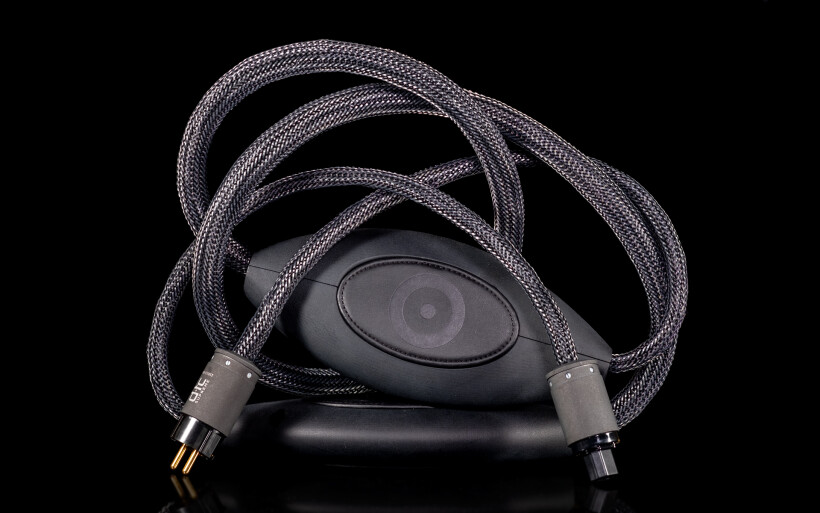 The key disparities between Ansuz D-TC Supreme and Entropic-processed C-MARC narrowed down to momentum, resolution, textural differentiation and instrumental outlines. My DAC fronted by the former felt immensely powerful, direct and immediate to grant me access to more of everything; wider dynamic contrasts, lower bass reach, more particles visible in air, higher oxygenation, deeper imaging perspective, higher clarity and sportier overall character. The Lihuanian’s calmer, rounder, bloomier and darker disposition resulted in a more laid back, less intense and somewhat hooded voicing. But more importantly, the obviousness of sonic changes after each swap implied bold easily traceable leaps rather than tiny quality increments. That was a highly valuable takeaway. Danes charge an awful lot for their top shelf specimen simply because they’re certain that it’s capable of blowing seasoned enthusiasts’ ears away. I’m not sure how many years I’d have to have under my audiophile belt to remain unfazed about this thoroughly impressive product, but I’m not there yet. Not even close. A proper crush was developed by just looking at this posh expensive date from afar and long before asking it for a dance.
The key disparities between Ansuz D-TC Supreme and Entropic-processed C-MARC narrowed down to momentum, resolution, textural differentiation and instrumental outlines. My DAC fronted by the former felt immensely powerful, direct and immediate to grant me access to more of everything; wider dynamic contrasts, lower bass reach, more particles visible in air, higher oxygenation, deeper imaging perspective, higher clarity and sportier overall character. The Lihuanian’s calmer, rounder, bloomier and darker disposition resulted in a more laid back, less intense and somewhat hooded voicing. But more importantly, the obviousness of sonic changes after each swap implied bold easily traceable leaps rather than tiny quality increments. That was a highly valuable takeaway. Danes charge an awful lot for their top shelf specimen simply because they’re certain that it’s capable of blowing seasoned enthusiasts’ ears away. I’m not sure how many years I’d have to have under my audiophile belt to remain unfazed about this thoroughly impressive product, but I’m not there yet. Not even close. A proper crush was developed by just looking at this posh expensive date from afar and long before asking it for a dance.
The best cables in my roster don’t impress by individual aspects tweaked in one way or another, but by altering the way how I perceive and feel about music I listen to daily. If a well-known song strikes me as different and partially new upon a mere cable swap, then I take this hardware shift and its catalyst as meaningful and potent. With Ansuz D-TC Supreme all tracks felt like heavily reworked noticeably better versions of themselves. Caetano Veloso’s minimalist take on “Come As You Are” originally by Nirvana was executed in atmospheric, vibrant and artful fashion by both contestants, but the Ansuz’s wobble trimming made it more composed. Interestingly this excess bass output previously remained undetected on my radar, so its reduction was new, instantly noticeable and highly appreciated, but the Dane’s star shined the brightest on threedimensional instrumental and vocal frames. It set these utmost distinct virtual projections within a deeper layer-wise more complex environment than that of C-MARC’s to net a more tangible and quite frankly spectacular here and now effect beyond the latter’s reach. Personal tastes and voicing biases aside, a cable’s ability to morph cameral studio-like recordings into immersive lifelike acts is insanity on its own two legs.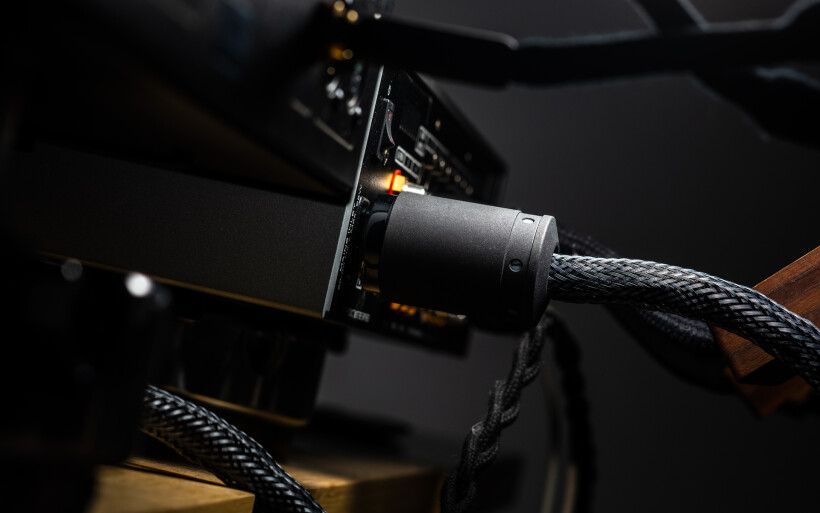 To put the above into a more understandable perspective, sound|kaos Vox 3afw monitors positioned close to a wall project images quite similarly to other standmounts, but if distanced at some two arm’s lengths away from my head and crossed there they become exceptionally convincing headphone-like aural monsters. The former setting would be the C-MARC’s approach while the latter accurately reflects what the D-TC Supreme did. Here it’s tempting to go in detail how this cable handled decays and produced more orderly, tighter and stronger pulses, but its remarkable spatial input alone had a drastic impact on how Veloso’s entire track felt like. Whether we like it or not, a power cord capable of such profound believable imaging reworks has to be costly and D-TC Supreme’s makers know it.
To put the above into a more understandable perspective, sound|kaos Vox 3afw monitors positioned close to a wall project images quite similarly to other standmounts, but if distanced at some two arm’s lengths away from my head and crossed there they become exceptionally convincing headphone-like aural monsters. The former setting would be the C-MARC’s approach while the latter accurately reflects what the D-TC Supreme did. Here it’s tempting to go in detail how this cable handled decays and produced more orderly, tighter and stronger pulses, but its remarkable spatial input alone had a drastic impact on how Veloso’s entire track felt like. Whether we like it or not, a power cord capable of such profound believable imaging reworks has to be costly and D-TC Supreme’s makers know it.
Vessel’s funky twisted “Red Sex” track opens up with various noisemakers, drums and synthetic bass beat all portrayed on a large open soundstage. Ansuz D-TC Supreme dug noticeably deeper than C-MARC and landed sensibly more powerful tighter low blows for more visceral sensibly quicker sonics. That’s it, this one exercise was enough to map how both cables executed their duties downstairs and the difference was very clear. My reference cord yet again struck me as rounder, softer and bloomier to become less pronounced on that front, even though normally it’s anything but. It just took a superior sparring partner to reveal how much more impactful, agile and tectonic bass can be still. The Ansuz also more easily showcased drum membranes’ tension and size so was more investigative of the two. The Lithuanian also is inherently insightful and there’s no question about that in my mind, but it didn’t stretch all the differences and contrasts as wide as its rival so had to arrive as less revealing.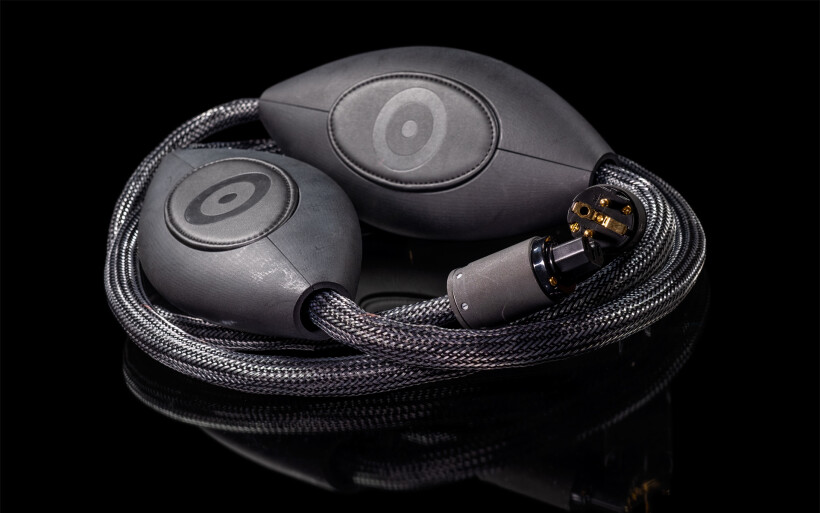 Leonard Cohen’s “Nevermind” for the most part features just one calm perfectly articulate vocal line that neither the Ansuz nor C-MARC had any difficulties in portraying as such. The former product however took a firm turn towards extra radiance, openness and hydration to present Cohen’s voice as more distinct and suspended within more tangible breathing space, whilst each his word came off as more explicit. The man’s virtual silhouette felt utmost vivid and greater insight into layers behind him made the entire stage deeper, more organic and tactile. If the C-MARC prioritized textures a bit more than outlines and ambience complexity, then the D-TC Supreme had everything under its scope and was more evenly profiled in that sense.
Leonard Cohen’s “Nevermind” for the most part features just one calm perfectly articulate vocal line that neither the Ansuz nor C-MARC had any difficulties in portraying as such. The former product however took a firm turn towards extra radiance, openness and hydration to present Cohen’s voice as more distinct and suspended within more tangible breathing space, whilst each his word came off as more explicit. The man’s virtual silhouette felt utmost vivid and greater insight into layers behind him made the entire stage deeper, more organic and tactile. If the C-MARC prioritized textures a bit more than outlines and ambience complexity, then the D-TC Supreme had everything under its scope and was more evenly profiled in that sense.
Veloso’s and Cohen’s voices introduced a firm spatial pattern that Lorde’s “Writer in the Dark” from her Melodrama LP further reinforced. Yet again the Ansuz rendered the singer as specific, very much direct and lifelike yet wasn’t any stingy on heft and color and kept at bay sharpness and piercing upper vocal range typical for this track. These are the reasons why I don’t listen to it often, most components simply won’t tolerate these flaws. The D-TC Supreme did however and sounded proper thick to make usually a touch thin piano keys pleasantly gravitational. The C-MARC’s sound is shout-free just as its rival’s, but as a product cloudier and less developed on imaging specificity it steered that song’s vibe towards a somewhat distant, darkish, rounder, dreamier and more picturesque direction. It was lovely on its own right, but the Dane’s unique take on vocal tasks, soft yet still remarkably pronounced edges and hefty treble that decayed for ages had me sold. These cords weren’t from same leagues, that’s what I’m saying.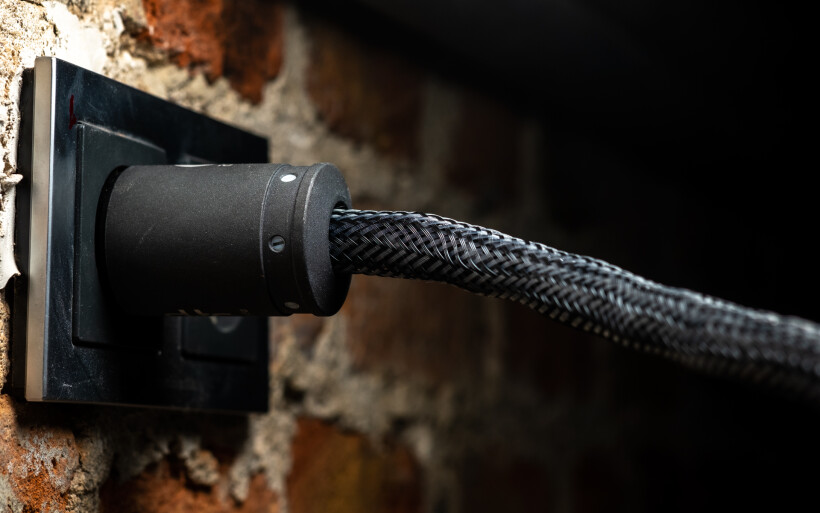 Although up to this point D-TC Supreme seems groomed for revealing fully open quick controlling delivery that’s smooth beyond belief and amazing on imaging jobs, it in fact offers far more than just this brief psych profile that doesn’t even cover its greatest asset, but for now let’s stop here. The two compared cables proved similarly capable on background blackness, canvas width and overall sonic meticulousness and maturity, however all else set them apart including speed and impact. Just two listens to “Prison Sex” from Tool’s Undertow LP were all it took to map which cord rendered its guitar line as more upbeat and elastic yet still sensibly hefty and raw, and which one didn’t go as far to primarily emphasize instrumental mass and textural pigmentation. This particular track was a good reminder to myself that such products truly can radically morph well-known playlist bits and also a lesson in humility. For years I poked fun at individuals on about rediscovering their music collection upon purchasing new audio accessories. Now the idea of doing the same whilst having today’s loaner still at my place seemed very appealing.
Although up to this point D-TC Supreme seems groomed for revealing fully open quick controlling delivery that’s smooth beyond belief and amazing on imaging jobs, it in fact offers far more than just this brief psych profile that doesn’t even cover its greatest asset, but for now let’s stop here. The two compared cables proved similarly capable on background blackness, canvas width and overall sonic meticulousness and maturity, however all else set them apart including speed and impact. Just two listens to “Prison Sex” from Tool’s Undertow LP were all it took to map which cord rendered its guitar line as more upbeat and elastic yet still sensibly hefty and raw, and which one didn’t go as far to primarily emphasize instrumental mass and textural pigmentation. This particular track was a good reminder to myself that such products truly can radically morph well-known playlist bits and also a lesson in humility. For years I poked fun at individuals on about rediscovering their music collection upon purchasing new audio accessories. Now the idea of doing the same whilst having today’s loaner still at my place seemed very appealing.
At a performance level as high as D-TC Supreme’s there are no weak links or sacrifices, just one’s own priorities and biases. That’s why in case of this extremely balanced and gifted product labels agile/open/shiny before calm/thick/voluptuous or vice versa simply don’t work. To my ears it was flawless across the board and like a chameleon proved adaptive to any music challenges on the menu just to exponentially extract and elevate the very best out of them. It expanded dynamic contrasts and injected extra power to further revitalize songs already energetic and snappy, while tracks focused on mood and sensual qualities it made even more moist, soothing, soft and charming. It was as bonkers on lucidity, directness, immediacy, air amount and quickness as was texturally complex, earthy, smooth, vibrant and artful. In that sense it had many faces and repertoire dictated which one should it put on, but all were equally lively, seasoned and posh. Needless to say, Danes’ best power specimen isn’t a situational product in the slightest, but the most universal such type I’d come across to date. Here I should also mention Siltech Triple Crown that also turned things upside down at my place and had me thoroughly impressed. Alas, without having it nearby I can’t possibly know where it would position itself against the Ansuz.
It’s time to finally reveal that Ansuz D-TC Supreme’s greatest strength is its efficacy so staggering, profound and obvious that comparing it to say a substantial DAC or amp upgrade won’t be any exaggeration. That’s exactly why this big heavy cumbersome cable is so dear, its voicing to one’s subjective liking or not is entirely irrelevant here. D-TC Supreme’s commensurable appetite for space and funds also won’t trouble its target clients who don’t sweat such casual expenses and often order enough to fully rewire their entire setups at one go. After spending several weeks with this product it’s yet again clear to me that its makers demand sacrifices in bleeding wallets and melted credit cards for just the right reason, peak performance without any compromises is their speciality after all. That said, today’s stunner now stands tall as the Mount Everest of its kind in my roster. Upon reaching that summit the view’s all red, hence the award below. ‘Til next time!
Associated Equipment:
- Amplifier: Trilogy 995R, FirstWatt F7
- DAC: LampizatOr Pacific (KR Audio T-100 / Living Voice 300B + KR Audio 5U4G Ltd. Ed.)
- Speakers: Boenicke Audio W11 SE+, sound|kaos Vox 3afw
- Transport: Innuos Statement
- Preamplifier: Trilogy 915R, Thöress DFP
- Speaker cables: Boenicke Audio S3, LessLoss C-MARC
- Speaker signal conditioning: LessLoss Firewall for Loudspeakers
- Interconnects: LessLoss Entropic Process C-MARC, Boenicke Audio IC3 CG
- Power components: Gigawatt PC-3 SE EVO+/LC-3 EVO, LessLoss C-MARC, LessLoss Entropic Process C-MARC, Boenicke Audio Power Gate, ISOL-8 Prometheus
- USB components: iFi audio Mercury3.0
- Rack: Franc Audio Accesories Wood Block Rack
- Network: Fidelizer EtherStream, Linksys WRT160N
- Music: NativeDSD
Retail prices of reviewed components in EU (excl. tax):
- Ansuz D-TC Supreme (3.0m): €36’000
- Ansuz D-TC Supreme (4.0m): €45’000
Manufacturer: Ansuz Acoustics


